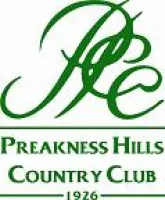Course Description
The Preakness Hills Country Club was founded in 1926 by a group of eight prominent local businessmen. It is located in the section of Wayne of the same name, which is derived from the thoroughbred race horse after whom the middle jewel of the Triple Crown is named.
Stories abound about the original clubhouse which was built in the later 1880's. Some of the stories were that it was built by a New York banker for his mistress, another that it was the scene of a grisly murder, still another that it was the site of a slave uprising before the Civil War and yet another that it is haunted.
The building’s actual history is far more prosaic. The property was acquired in 1921 by Mrs. Harriet Z. Frew from the Campbell family, which had farmed it for generations. Mrs. Frew built a pretentious dwelling and installed a wrought-iron fence - some of which is till standing along Ratzer Road. The house was destroyed by fire in 1922. Mrs. Frew immediately built what is now the clubhouse; the builders used concrete, steel, and marble to make it as near fireproof as possible.
The house itself is in the style of gracious country mansions favored by New York stockbrokers and bankers after World War I. Its spacious center hall has a beautifully crafted grand staircase above which hovers a large dome of Tiffany glass. In its remodeling over the years, the club has kept most of the opulent original features.
For its golf course design, Preakness Hills turned to William Henry "Willie" Tucker. Tucker came to the United States in 1895 to join his brother Sam, head professional at St. Andrew’s at the time. The Tucker brothers produced handmade golf clubs marketed under the name "Defiance." While at St. Andrew’s, Willie helped with the design of St. Andrew’s Mount Hope course. Later he designed such courses as the original North Hills in Douglaston and built the present 27-hole Ridgewood complex for A.W. Tillinghast.
Plans for the Preakness Hills course were drawn up in 1926. The full 18-hole course opened in April 1929, and played to a par of 72 at 6,400 yards.
Tucker’s course had remained virtually unchanged over the years, with one exception that took place in the early 1950's when the nines were reversed and tees extended to lengthen the course.
Throughout the 1970's and 1980's the face of the golf course started to change with the work of architects Geoffrey Cornish and Brian Silva. In an extensive refurbishing program, the club renovated many of the greens and bunkers. A major plan for landscaping and tree planting took place at the same time.
In 2005-2006, the golf course experienced a renaissance. With the expertise of golf course architect Ron Forse, a complete restoration of it’s past design and glory was achieved.
With a rich history to look back on and bright future ahead, Preakness Hills has much to be proud of these days. It has worked hard to take its place among the area’s premiere facilities. Preakness Hills will provide all with a warm welcome, the best in service, a great golf challenge and many pleasant memories.


